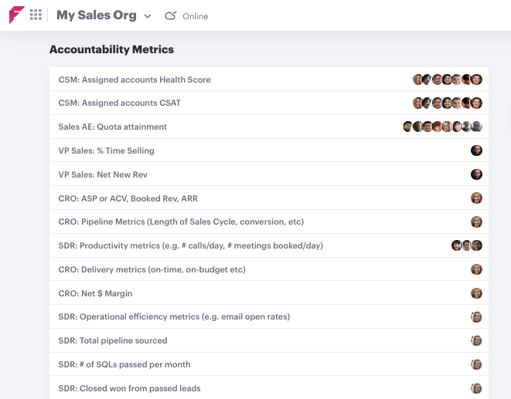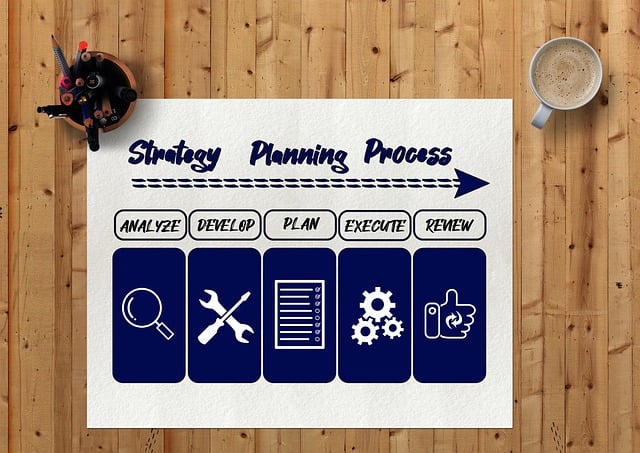Accountability is crucial for any successful business. Without it, things don’t get done, and no one’s on the same page. Unfortunately, accountability is rarely easy to achieve — 25% of managers indicate that lack of accountability is one of their biggest challenges.
It’s a problem that’s not just limited to management. A lack of accountability can bog down an entire organization, down to each individual employee. One Gallup survey uncovered that half of employees aren’t clear about their managers’ expectations.
Clearly, work needs to be done on both sides to increase employee accountability. So what can you do to improve accountability in your organization?
What Is Employee Accountability?
Employee accountability is the ability to take responsibility for outcomes at an individual level. This is to ensure that every member of an organization, from part-time clerks to executives, does their part to contribute to achieving company goals.
Employee accountability should not exist in a vacuum, however. Rather, consider it to be a building block of team accountability. Both rely on each other and are important contributors to overarching organizational accountability.
Interactive demo: Functionly includes a built-in and fully customizable function and accountability library. Accountabilities can be assigned to roles and, ultimately, people to ensure clear employee accountability.
Understand the Benefits of Being Accountable
When an organization embraces employee accountability at every level, everyone benefits. Here are just a few examples of this:
Accountability Leads to Performance Improvement
It’s easy to think of accountability as just ensuring that workers are responsible for completing tasks. While everyone must know what is expected of them, managers must also hold themselves accountable to give team members the training and resources they need. This ensures higher performance from employees that are well-equipped to fulfill their tasks.
Organizations that Foster Accountability Build Trust
When employees are held accountable when they don’t do their jobs, it may be uncomfortable. However, it increases trust among teams and across the organization. Over time, people will feel more confident that their peers will follow through on their word and do their jobs well.
Accountability and Autonomy Go Hand in Hand
Remote work and flexible schedules are hot-button issues, but at the core of these topics is one similar theme: autonomy. Workers want their managers to trust them to do their jobs without constant oversight and micromanagement. However, autonomy doesn’t work without accountability; otherwise, the work might not get done.
The good news is that managers willing to embrace autonomy are in a better position to demand personal accountability. In the end, everybody wins. Workers get the autonomy they crave, and employers get workers with a sense of accountability.
How Is Individual Accountability Measured?
Unfortunately, the ways that most organizations measure employee accountability are counter-productive, leading to performance reviews that both the manager and the employee dread.
All too often, the accountability and worth of a worker are measured and reflected in the form of scores or grades. To make matters worse, some workplaces have policies limiting the number of scores or ratings that managers can give, meaning that there’s always someone who receives the lowest score and is subject to the worst kind of attention from managers and peers.
This causes two problems. The first is an unhealthy sense of competition between workers. Rather than fostering an environment where collaboration and cooperation are rewarded, managers create a stressful situation in which employees feel pressured to outdo one another.
Additionally, this process leads managers to evaluate with a negative bias. Rather than finding reasons to praise workers and acknowledge accomplishments, they feel obligated to find failures and shortcomings.
Improving Employee Accountability Measurement
So how can organizations improve the methods they use to measure and evaluate accountability? A good place to start is by creating or improving accountability processes that include both formal and informal measurements.
These accountability processes are activities that can be used to demonstrate or encourage accountability and might be as formal as annual reviews or informal as weekly check-ins. Ideally, you’ll include both.
You should consider embracing multiple accountability processes that allow for continued, regular discussion and growth, rather than saving an entire year’s worth of feedback for a dreaded annual review. These more frequent meetings will allow both the manager and the employee to discuss accountability in multiple low-stress situations.
These processes also put control back in the hands of the two most important people: the worker and their direct manager. For example, an organization may mandate the use of annual reviews and measured points systems, but executives won’t ask for detailed reports on every weekly one-on-one. This allows managers and team members to work together to create better accountability processes, resulting in better team morale and achieving accountability by more effective means.
Interactive Functionly Template: Checkout how accountabilities are clearly assigned.
Tips for Increasing Employee Accountability
It’s important to create a work environment that encourages positive relationships between managers and team members. However, managers must still find ways to keep their employees accountable. These tips are designed to facilitate this.
Make Accountabilities Clear
No one can be held accountable for unclear responsibilities. Every person should know which outcomes they are responsible for, and roles and responsibilities must be clearly defined.
Additionally, it’s important that all team members know what their colleagues are accountable for within the organization. Team member responsibilities should be clearly communicated upon hire, but also documented for reference.
 A screenshot showing accountability metrics mapped to staff, using Functionly.
A screenshot showing accountability metrics mapped to staff, using Functionly.
Provide Resources Empowerment and Training
You can only expect accountability from your employees when you set them up for success. As such, every member of the organization needs:
- Resources: Any tools or equipment required to complete tasks correctly
- Empowerment: Authority to make decisions and take action as needed
- Training: Education provided to ensure an adequate level of competence
Managers who provide these three elements can expect greater accountability in their team members.
Set Goals and Make a Plan
Transparency and clarity are key when fostering accountability, so employees and managers must work together to set accountability goals and development plans. This can be difficult, since it often means reviewing areas where there may be a lack of accountability. As such, it’s important to set the tone carefully and make it clear that you’re working together.
One way to approach these discussions is to ask questions like “what did you learn?” These open-ended, non-adversarial questions encourage thoughtful responses and lower the pressure.
When it comes to the goals you set, they shouldn’t be treated as pass/fail, where an employee feels they must be perfect or fail completely. Furthermore, all progress (even incremental progress) should be valued. Even failure can be a positive if it is clear that there were insights gained.
One helpful approach is to divide accountability goals into two categories. The first includes goals that increase accountability in the employee. For example, one such goal for an overnight computer operator might be to create a checklist of all essential tasks that must be completed as part of the nightly processing. They will initial each item and review the entire checklist at the end of the evening.
The second kind of goal is one that improves understanding, productivity, or other factors that determine how well an employee can produce desired outcomes. For example, a goal might be for a billing clerk to complete the company’s advanced fraud awareness training. By doing this, they will be able to detect and report fraudulent invoices.
Finally, review the plan. Is it reasonable and achievable? Does it encourage improvement while also maintaining the employee’s dignity?
If you are the employee, does the plan reflect your input? What about your goals? Are you going to have adequate chances to build and demonstrate accountability? This is especially important if one of your goals is to show that you are ready to take on additional responsibilities or a leadership role.

Implement the Plan and Measure Progress
Now it’s time to implement the plan. If there are just a few action items to address, it might make sense to put the entire plan into action. If there’s quite a bit of work to be done, consider setting priorities. Is there something that absolutely must be addressed? Add that to the top of the list. However, keep in mind that starting with some small items can lead to some early victories, and that can be encouraging.
Keep in mind that while you don’t want to go overboard with numbers and tracking, each goal should be accompanied by a metric that allows for measuring progress and success. Then, team members and managers should meet regularly to go over progress and evaluate how well these metrics are met. It’s also important to discuss any roadblocks that may have emerged.
Celebrate Successes and Treat Failures as Learning Opportunities
The ultimate goal in this process is to have employees become as accountable as possible. When team members make progress toward that, you should celebrate and reward it where appropriate. At the same time, don’t treat failures as something entirely negative. Instead, take the opportunity to review what happened. Then, revisit the plan to make strategic adjustments.
Organizational Charts as an Employee Accountability Tool
If you have functional and organizational charts within your company’s knowledge base, employees can refer to these as needed. These documents will have the information they need to understand their obligations and what they can expect from their coworkers, as well as reporting flows that are important to maintaining accountability.
Org charts and tools from Functionly make it possible to create and share these charts, encouraging and fostering accountability at every level of the organization. Try Functionly free today.





